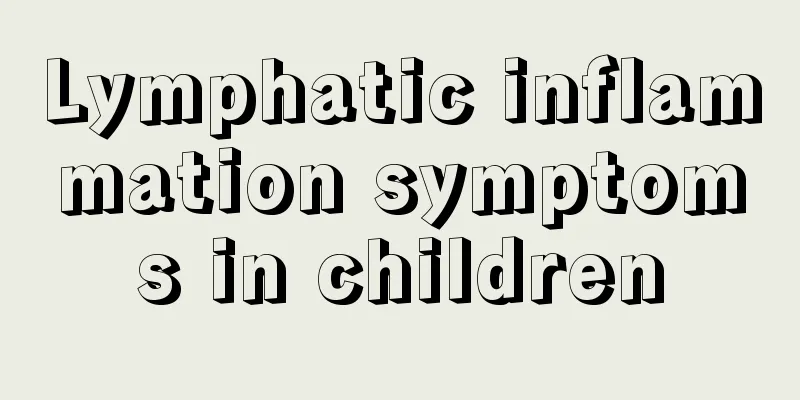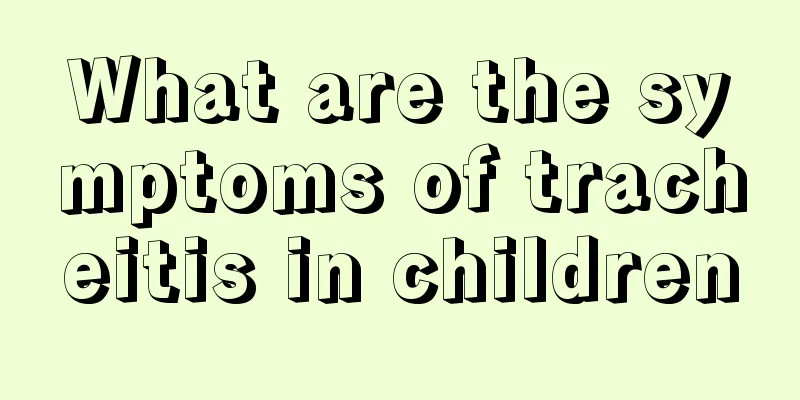How to treat mild pneumonia in newborns

|
Some newborns suffer from certain diseases, which seriously threaten the health of newborns. Therefore, parents of newborns should pay more attention to this problem. Many diseases can be effectively treated in the early stage. Therefore, if there is a problem, we must pay attention to the corresponding treatment. So how to treat mild pneumonia in newborns? Let me introduce this issue to you below. 1. General treatment Keep the respiratory tract open: clear the inhaled material as quickly as possible, suck out the oropharyngeal and nasal secretions, and turn over and pat the back regularly to facilitate the discharge of sputum. Strengthen care and monitoring, and pay attention to keeping warm. Keep the indoor air fresh and maintain suitable and stable temperature and humidity. 2. Antibiotics Once the newborn is found to have increased breathing rate after birth, antibiotic treatment should be started: Early intravenous antibiotics are appropriate for bacterial pneumonia. In principle, antibiotics are selected based on the pathogen: (1) Infections with Staphylococcus aureus can be treated with first-generation cephalosporins, enzyme-resistant penicillins, or ampicillin. (2) Group B hemolytic streptococcal pneumonia can be treated with ampicillin and penicillin. (3) For Gram-negative bacteria such as Pseudomonas aeruginosa, severe cases, or patients resistant to general antibiotics, third-generation cephalosporins can be used; for Enterobacterial pneumonia, amikacin (amikacin) and ampicillin can be used. (4) Ampicillin can be used for Listeria pneumonia. (5) Erythromycin is the first choice for Chlamydia pneumonia. (6) Metronidazole (Flagyl) intravenous drip is the first choice for anaerobic bacterial infection. (7) Viral pneumonia can be treated with ribavirin or interferon. Respiratory syncytial virus pneumonia can be treated with ribavirin (viraviril) nebulized inhalation. Herpes simplex virus can be treated with intravenous drip of adenosine or acyclovir (acyclovir). 3. Oxygen supply For patients with severe complications of respiratory failure, continuous positive airway pressure or mechanical ventilation after endotracheal intubation can be used. For hypoxemia, oxygen can be supplied according to the situation to maintain blood oxygen at 6.65-10.7 kPa (50-80 mmHg), not exceeding 16.0 kPa (120 mmHg). The above is my opinion on this issue. If the child has the above problems, the child needs to pay attention to timely examination and treatment to ensure the health of the body and avoid dangerous situations caused by the above diseases. Finally, I wish the child a speedy recovery and rehabilitation. |
<<: What should I do if my newborn baby has scrotal swelling?
>>: How to care for neonatal acne?
Recommend
Precautions for child safety seats [Hot Mom Baby]
A child safety seat is a seat designed specifical...
What should I pay attention to if my baby always kicks the quilt at night?
Nowadays, every family has only one child. For th...
How to treat baby's cough and sore throat
Coughing is a common problem for most babies. The...
What is the reason for the baby's stomach to be full?
The digestive system of some newborn babies is no...
Can children's sinusitis be cured?
Many mothers are very concerned about whether the...
What to do if your baby is frightened
Families with babies tend to pay special attentio...
What is the sleep time for primary school students?
As society continues to develop, taking a nap can...
Child convulsing in the middle of the night
If a child has convulsions in the middle of the n...
How to wash the butt of a newborn
The buttocks of newborn babies are delicate and s...
Oral liquid to increase children's immunity
Children are in the early stages of development a...
How to care for neonatal acne?
When it comes to acne, many people know that it i...
Nursing measures for newborns with bleeding umbilicus
When the fetus is in the mother's womb, it gr...
What should be paid attention to in the surgical treatment of torticollis in children
Many parents will find that their children have t...
Children who eat this will not be prone to allergies when they grow up
Allergies are a very common phenomenon nowadays, ...
Is it OK for babies to use air conditioning?
When the weather is hot in the summer, both adult...









